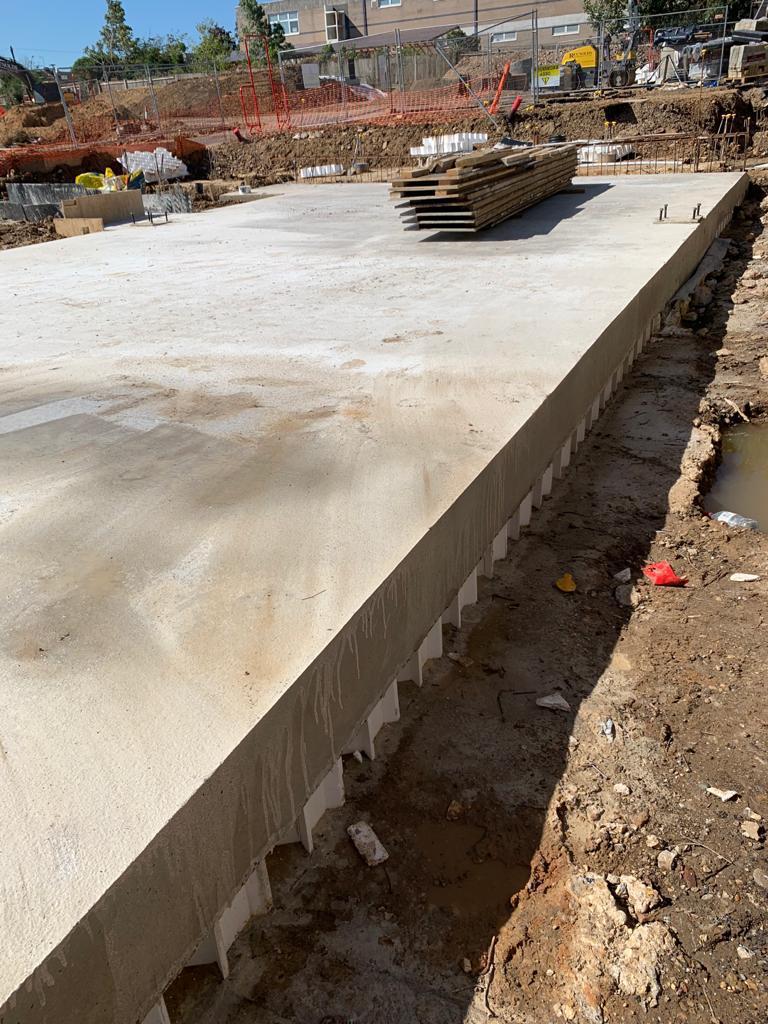Top Five Benefits Of Piled Raft Foundation
October 24, 2024

Piled raft foundation is the most cost-effective, flexible, and robust foundation solution for your building. This technique uses a pile and raft foundation mix to enhance the strength of the structure. If you plan to construct a solid foundation for your building, you should understand the benefits of a piled raft foundation. It provides better load-bearing capacity than a raft foundation and increased protection against ground settlement. The following discussion will discuss the top five benefits of a piled raft foundation, which may help you make better decisions about your foundation work.
Better load-bearing capacity
The pile and raft foundation are constructed depending on the size of the structure and load. The number of piles and their diameter depends on the possible load the foundation is supposed to carry. Using multiple underground pile and raft foundations helps distribute structural load and transform the load into a more substantial layer of soil. Hence, the piled raft foundation improves the foundation's load-bearing capacity. Piles and rafts are used where the soil structure is weak and unable to carry a structural load. This technique ensures better foundational strength and transforms a much heavier building load into deeper soil strata. The benefits of pile and raft foundations may be realised if you plan to construct your building on weak soil strata.
Simpler design
Piled raft foundations offer a more straightforward design and construction process. Numerous deep piles are constructed to distribute the load of the building, which may not require heavy machinery or much time. A piled raft foundation can transform horizontal load through a compressible soil layer to a less compressible one. Your contractor can use reinforced concrete or steel piles to form the structure. However, if you choose steel piles, it may cost you more than reinforced concrete piles. The choice of piles depends on the type of soil on which you plan to construct the building.
Resistance to settlement
In a piled raft foundation, piles and rafts carry the load of the superstructure, where piles reduce settlement (Long and Vietnam, 2010). Settlement-resisting piled foundations were used abundantly in Germany during the 1980s and 1990s to support heavy high-rise buildings (Long and Vietnam, 2010). In modern UK construction, the piled raft foundation technique protects buildings from settlement. Building settlement is generally caused by the soil's weaker capability to bear the load of the superstructure. The benefits of using piles are safeguarding the building from settlements where the load-bearing capability of the soil is weak.
Protection against seismic activities
Another benefit of this type of foundation is that it provides better protection against seismic activities. There are two types of piled raft foundations: connected and unconnected. Pile heads directly connected to the raft are called connected piled raft foundations. On the other hand, if there is a layer (cushion) of soil between pile heads and rafts, it is called an unconnected piled raft foundation. During seismic activity, the piled raft structure faces a significant lateral load that can damage it. Pile joint areas with the raft may develop cracks. However, if the cushion thickness is between 200 mm and 300 mm in an unconnected piled raft, there is an estimated 10% to 15% reduction in seismic acceleration and impact on the structure (ALSHABA et al. 2023). The benefits of this type of foundation can be realised in earthquake-prone areas.
The design flexibility of piled raft foundation
One of the benefits of a piled raft foundation is that it provides better design flexibility, as required piles can be constructed anywhere on the ground according to the shape and design of the superstructure. You can design your building foundation in different shapes and sizes. Reinforced concrete or steel piles can be used in places according to the design of the superstructure. The structure of the piles, their length, thickness, and number can be made as per requirement. Pile and raft foundations are beneficial for modern heavy buildings with innovative designs. You can communicate with your contractor to determine the piles required for your construction and customise the build quality or materials for piles.
Conclusion
Pile and raft foundations are crucial in modern construction work in the UK. They provide enhanced structural stability, reduce settlement chances, and reduce the load of the superstructure on topsoil. Piled raft foundation is beneficial in areas with highly compressible soil types. The pile and raft foundation helps to distribute the heavy load of the superstructure to more profound and stronger strata. You should consult your contractor to determine the soil quality on which the construction work will take place. Your contractor will decide on the type of piles required based on the construction structure, load, and soil quality. At Piled Raft Foundation, we can help you construct a solid foundation for your building. Contact us today for a free and personalized quote.
External links Long, P.D. and Vietnam, V.W., 2010. Piled raft—a cost-effective foundation method for high-rises. Geotechnical Engineering, 41(1), p.149.https://www.researchgate.net/profile/Long-Phung-5/publication/290988187_Piled_raft_-_a_cost-effective_foundation_method_for_high-rises/links/5c18802992851c39ebf53a5a/Piled-raft-a-cost-effective-foundation-method-for-high-rises.pdf ALSHABA, A.A., HASSONA, F.A., HASSAN, A.M. and ABDELAZIZ, T.M., 2023. Disconnected Piled Raft Foundations Systems.https://www.researchgate.net/profile/Ameen-Alshaba/publication/377953486_Disconnected_Piled_Raft_Foundations_Systems/links/65beb5731e1ec12eff71afa6/Disconnected-Piled-Raft-Foundations-Systems.pdf